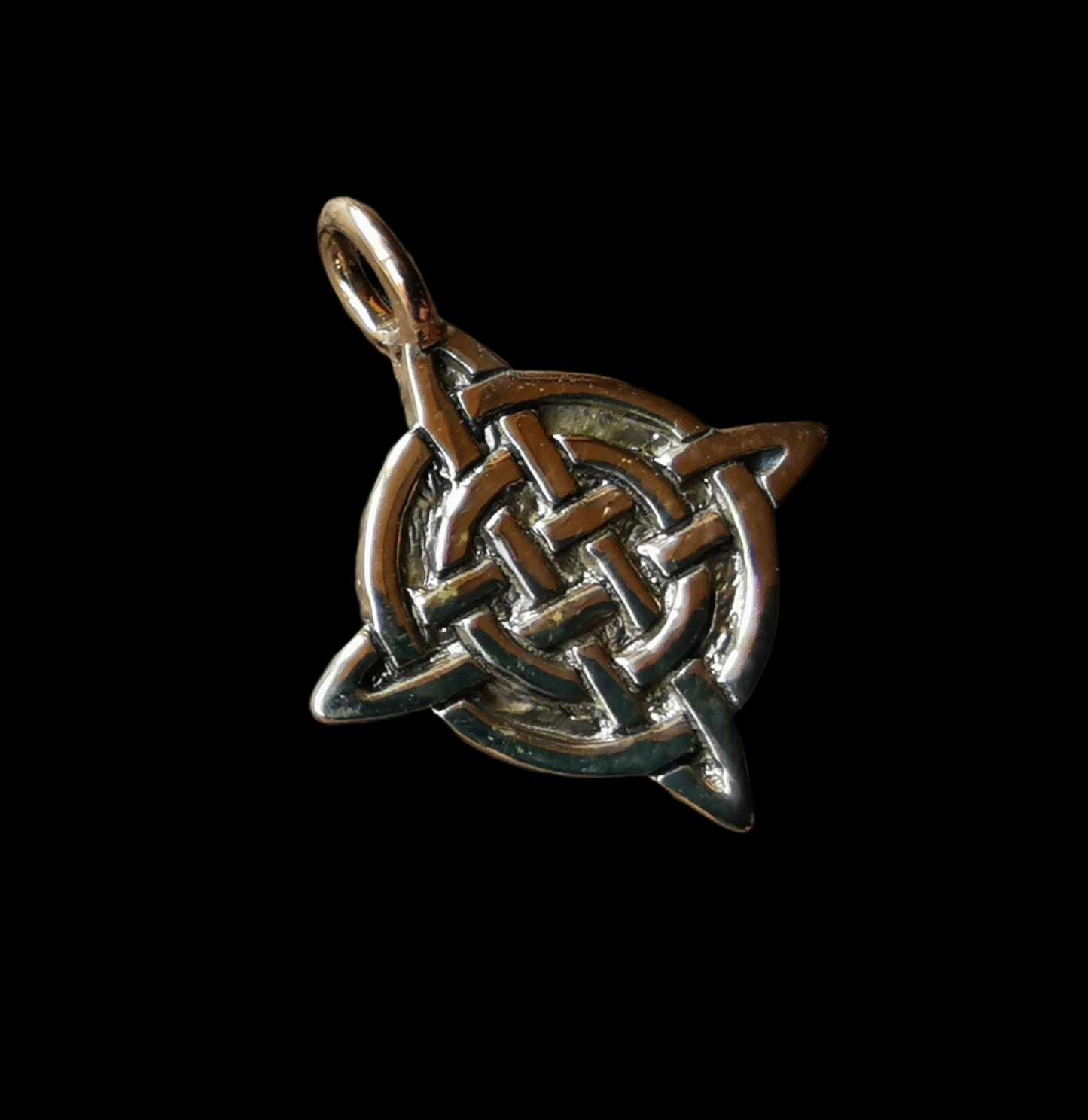Portal Glastonbury
Ref.SM0088 - Celtic knot
Ref.SM0088 - Celtic knot
Couldn't load pickup availability
Ref.SM0088 - Celtic knot
Celtic knots, intricate patterns of interwoven lines with no beginning or end, carry profound symbolic significance rooted in their geometric complexity and cultural heritage, particularly from the Insular art of the Celtic peoples in Ireland, Scotland, and Wales. Their meaning centers on eternity, interconnectedness, continuity, and balance, reflecting universal patterns in nature, human relationships, and philosophical thought.
Symbolic Significance
At their core, Celtic knots symbolize eternity and continuity. The endless, looping lines, with no clear start or finish, evoke cyclical processes like seasons, life cycles, or the flow of time, suggesting that existence persists in an unbroken stream. This timeless quality mirrors natural rhythms—tides, orbits—or enduring human bonds, representing the persistence of love, loyalty, or heritage across generations.
Interconnectedness is a key theme. The interwoven strands, seamlessly linking without breaking, symbolize the unity of diverse elements—individuals, communities, or ideas—within a cohesive whole. This reflects social structures, like clans or families, or ecological systems, where parts rely on one another, making Celtic knots emblems of harmony and mutual dependence.
Balance and symmetry are inherent in their design. The knots’ meticulous patterns, often mirroring or rotating, create visual equilibrium, symbolizing stability amid complexity. This balance suggests a reconciliation of opposites—chaos and order, movement and stillness—encouraging resilience and adaptability in navigating life’s intricacies.
Celtic knots also represent protection and strength. Historically used in art, jewelry, and manuscripts (e.g., the Book of Kells), their unbroken lines were thought to ward off harm, symbolizing a shield of continuity against disruption. This makes them emblems of safeguarding personal or communal bonds, reinforcing endurance through challenges.
Specific knots carry nuanced meanings:
Trinity Knot (Triquetra): With three points, it symbolizes triads like past-present-future or mind-body-spirit, reflecting balanced unity.
Spiral Knots: Evoke growth and evolution, mirroring natural spirals (e.g., shells, galaxies) and personal transformation.
Shield Knots: Emphasize protection, often square or circular, symbolizing defense and resilience.
Spiritual and Philosophical Significance
Spiritually, Celtic knots serve as meditative tools, their intricate paths guiding the mind toward unity and inner peace. Tracing their loops can symbolize aligning one’s energies—thought, emotion, action—with life’s cyclical flow, fostering self-awareness and a sense of connection to a larger whole. They encourage embracing change as part of an eternal continuum, promoting acceptance and grounding.
Philosophically, Celtic knots challenge linear perspectives. Their endless, interwoven nature suggests reality is cyclical and interconnected, not fragmented or finite. This promotes a holistic worldview, valuing the interplay of diverse truths and the strength of collective bonds, urging empathy and cooperation.
The knots’ versatility allows personal interpretations. They might represent enduring love in relationships, the legacy of ancestry, or the journey of self-discovery, making them universal yet intimate symbols adaptable to individual or collective values.
Cultural Contexts
Celtic Art: Originating around 450 CE, Celtic knots flourished in Insular art, notably in illuminated manuscripts (e.g., Lindisfarne Gospels) and stone carvings, symbolizing eternity and craftsmanship. Their complexity reflected cultural pride and intellectual depth.
Medieval Europe: Knots adorned crosses and jewelry, symbolizing continuity of heritage amid societal changes, often blending Celtic and Christian motifs to express unity.
Modern Contexts: Celtic knots are popular in tattoos, jewelry, and decor, symbolizing heritage, love, or personal strength. They’re embraced globally, especially in Celtic diaspora communities, as emblems of identity and resilience.
Global Parallels: Similar interwoven patterns in Norse, Islamic, or Buddhist art reflect universal fascination with continuity and interconnectedness, reinforcing the knots’ broad appeal.
Celtic knots symbolize eternity, interconnectedness, balance, and protection. They embody the continuity of life’s cycles, the unity of diverse elements, and the strength of enduring bonds, inviting reflection on personal growth, collective harmony, and one’s place within life’s intricate, unending web.
Type: medallion
Material: brass
Size: 23mm/0.91in approx.




